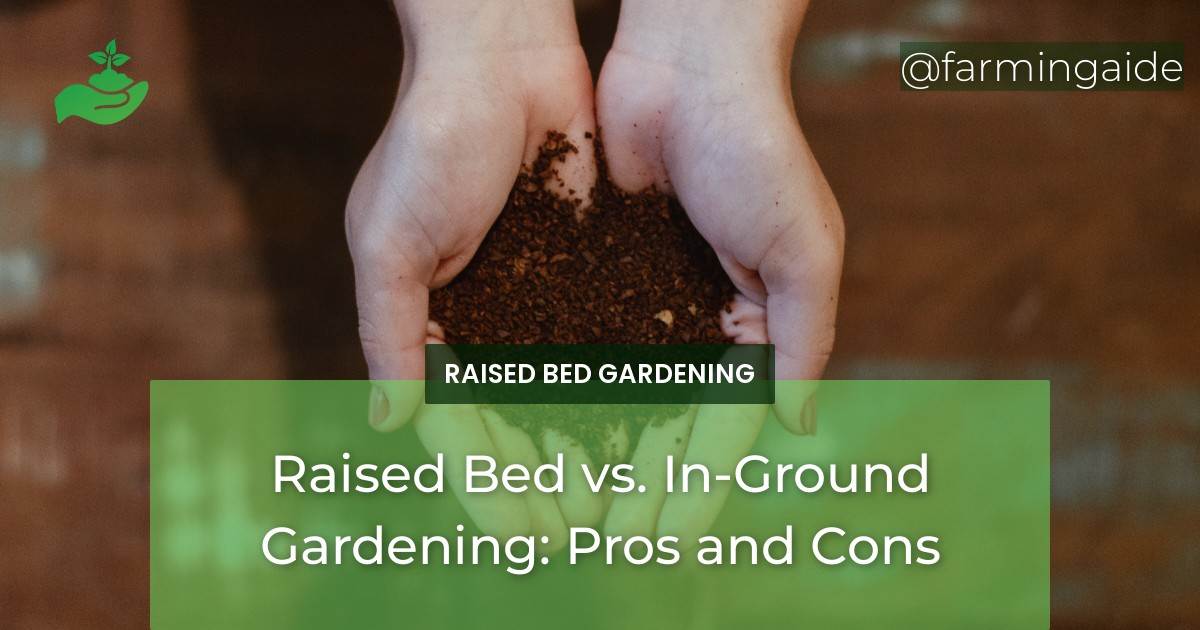Gardening is a rewarding experience that offers many benefits. Not only is it a great way to get some fresh air and exercise, but it also provides you with fresh and healthy produce.
One of the most important decisions that you will have to make when starting a garden is whether to use raised bed vs. in-ground gardening. Both options have their pros and cons, and it’s important to understand them so you can choose the best option for your needs.
Table of Contents
Advantages of Raised Bed Gardening
Improved Soil Quality
Raised bed gardening allows you to control the quality of the soil you use. You can create a customized soil mix that is ideal for the plants you want to grow. This means that you can create a soil mix that is rich in the nutrients that your plants need, which can help them grow healthier and stronger.
Better Drainage
Raised beds are elevated above the ground, allowing for better drainage. This is particularly beneficial if you live in an area with heavy rainfall or if your garden is located in a low-lying area. The elevated bed allows excess water to drain away from the roots of your plants, preventing waterlogging and root rot.
Higher Yield
With raised bed gardening, you can maximize your planting space, resulting in a higher yield. You can also plant your crops in a more organized and efficient manner, which can help prevent overcrowding and disease.
Ease of Access and Maintenance
Raised beds are easier to access and maintain than in-ground gardens. They are elevated, which means that you don’t have to bend down as far to tend to your plants. They are also easier to weed and water, and you can add organic matter or fertilizer to your soil mix without having to till the soil.
Disadvantages of Raised Bed Gardening
Cost
Raised bed gardening can be more expensive than in-ground gardening. You will need to purchase materials to build your raised bed, such as lumber or bricks. You will also need to purchase soil and compost to fill the bed.
Limited Planting Space
Raised beds have a limited planting space, which means that you may not be able to grow as many plants as you would in an in-ground garden. This can be a disadvantage if you have limited space in your yard.
ALSO READ
Advantages of In-Ground Gardening
Lower Cost
In-ground gardening is generally less expensive than raised bed gardening. You don’t need to purchase materials to build a raised bed, and you can use the soil that is already in your garden.
More Planting Space
In-ground gardening provides more planting space than a raised bed. This means that you can grow more plants, which can result in a higher yield.
Better Root Development
In-ground gardening allows your plants to develop deeper roots. This can be beneficial for plants that require deep roots to access water and nutrients.
Disadvantages of In-Ground Gardening
Poor Drainage
In-ground gardens can have poor drainage, which can lead to waterlogging and root rot. This can be a disadvantage if you live in an area with heavy rainfall or if your garden is located in a low-lying area.
Higher Weed Growth
In-ground gardens can be more prone to weed growth, which can be difficult to manage. Weeds can compete with your plants for water and nutrients, which can result in a lower yield.
Difficult to Maintain
In-ground gardens can be more difficult to maintain than raised beds. They require more bending and kneeling, which can be hard on your back and knees. They can also be more difficult to weed, water, and fertilize.
Comparison of Raised Bed and In-Ground Gardening
Cost
- Raised bed gardening can be more expensive than in-ground gardening due to the cost of materials.
- In-ground gardening is generally less expensive than raised bed gardening since you don’t need to purchase materials to build a raised bed.
Soil Quality
- Raised bed gardening allows you to control the quality of the soil, resulting in healthier plants.
- In-ground gardening uses the existing soil, which may not be ideal for your plants.
Drainage
- Raised bed gardening provides better drainage than in-ground gardening, which can prevent waterlogging and root rot.
- In-ground gardening can have poor drainage, which can lead to waterlogging and root rot.
Planting Space
- Raised bed gardening has a limited planting space, which can be a disadvantage if you have limited space in your yard.
- In-ground gardening provides more planting space, which can result in a higher yield.
Maintenance
- Raised bed gardening is easier to maintain than in-ground gardening, requiring less bending and kneeling.
- In-ground gardening is more difficult to maintain than raised bed gardening, requiring more bending and kneeling.
Yield
- Raised bed gardening can result in a higher yield due to the efficient use of space and organized planting.
- In-ground gardening can result in a lower yield due to overcrowding and disease.
What are the advantages and disadvantages of using concrete blocks for raised bed gardening compared to in-ground gardening?
One of the pros and cons of raised bed garden blocks is that they provide excellent drainage and aeration for plants. However, they can be more expensive than in-ground gardening and may require more maintenance. Additionally, raised bed garden blocks can limit the root space for certain plants and vegetables.
Conclusion
When it comes to choosing between raised bed gardening and in-ground gardening, it ultimately comes down to your personal preferences and circumstances. While raised bed gardening may offer improved soil quality, better drainage, and a higher yield, it can be more expensive and have limited planting space. In-ground gardening may be less expensive and offer more planting space, but it can have poor drainage and be difficult to maintain. By considering the pros and cons of each option, you can make an informed decision that best suits your needs.
RELATED ARTICLES:


